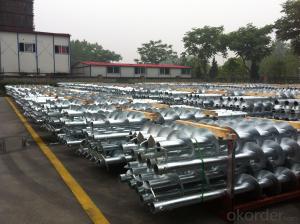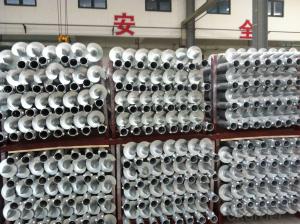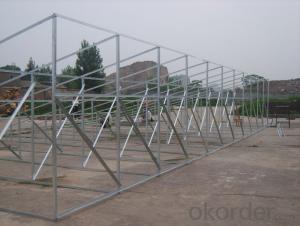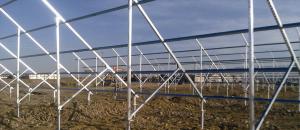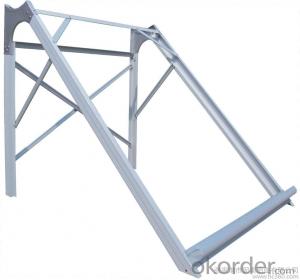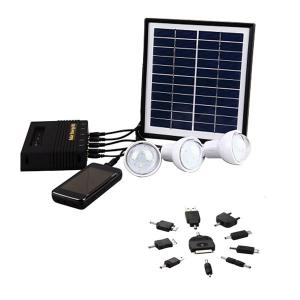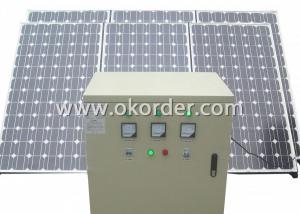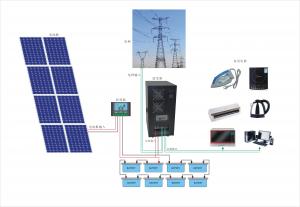Solar Energy Systems Brooklyn NY Solar Mounting System Screw Pile
- Loading Port:
- China Main Port
- Payment Terms:
- TT OR LC
- Min Order Qty:
- -
- Supply Capability:
- -
OKorder Service Pledge
OKorder Financial Service
You Might Also Like
Packaging & Delivery
Packaging Detail:Normal package seaworthy
Delivery Detail:15 days
Specifications
Easy installation Competitive price TUV&SGS test report & CSA certification 15-warranty
Specifications
1) Super smooth beautiful appearance,outstanding quality,large supply.
2) Available in customized surface finishes.
3) Well machined,for example,cutting,drilling and milling with excellent tolerance.
4) Meet with customer’s designs and supply you best price.
5)Usages:Supply for solar panel modules.
Technical characteristics
Installation site:
ground,hillside,and grassland
Installation angle
it is based on customers’ requirements
Installation height
it is basedon customers’ requirements
Solar panel type; with or without frame
Components arrangement :horizontal or vertical
Support track
aluminum alloy extrusion
Quality warranty
15 years
Advantages
1)Quick installation: with high degree of pre-installed rate, the system could be easily installed by using galvanized carbon steel rails for PV Stent, and specially designed connection parts of the PV bracket, which could reduce installation time and cost greatly.
2)Offer unmatched durability: with all structural components comprised of high class stainless steel and anodized aluminum alloy, it is designed for 25 years service life and backed by 15 years warranty.
3)Stand up to extreme weather: The SuninTek solar mount is designed to stand up to the extreme weather complied with the AS/NZ 1170 and other international structure load standard by the skilled engineer. The main support components also have been tested to guarantee its structure and load-carrying capacity.
4)Provide broad installation flexibility: These systems accommodate most commercially available framed solar panels , and they can scale easily from small to large, multi-megawatt installations.
5)Diversified Application: The PV mounting system produced can be adopted by various types of PV cells panels which you can find in the market. It can serve for both mini solar power system and huge plant with megawatt capability.
Main features
1. Installation cost savings.
2. Save installation time.
3. Increase the mechanical strength of solar energy mounting to ensure that wind requirements.
4. The outdoor for installation of solar energy.
5. Length can be customized according to customers.
6. Service life of up to 25 years.
7. Products through the international certification.
8. Stent material composition of the galvanized steel and aluminum.
9. 15 years system and structural guarantee.
10.Flexible post spacing withstands different wind & snow loads.
11. High quality material in Aluminium 6005-T5 and SUS 304.
12.Screws and nuts go with every components needed.
13.Mechanical calculation and reliability tested to ensure highest product quality.
- Q: Can solar energy systems be used for powering electric vehicle solar charging stations at highways?
- Yes, solar energy systems can certainly be used to power electric vehicle (EV) solar charging stations at highways. Solar power is a clean and renewable energy source that can be harnessed through photovoltaic (PV) panels. These panels convert sunlight into electricity, which can then be used to charge EVs. Highways are often exposed to ample sunlight, making them ideal locations for solar charging stations. By utilizing solar energy, these charging stations can operate off-grid, reducing dependence on traditional power sources and minimizing environmental impact. Additionally, solar charging stations can be installed along highways without the need for extensive infrastructure development, as they do not require connection to the electrical grid. Solar-powered EV charging stations offer several benefits. First, they provide a sustainable and carbon-free method of charging EVs, helping to reduce greenhouse gas emissions and combat climate change. Second, they contribute to the development of a decentralized energy system, as they are independent of the electrical grid. This decentralization can enhance energy security and resilience, as well as increase the overall reliability of the charging infrastructure. Moreover, solar charging stations can have economic advantages. As the cost of solar panels continues to decrease and the efficiency of PV technology improves, the installation and maintenance costs of solar charging stations are becoming increasingly competitive with traditional charging infrastructure. Furthermore, solar charging stations can generate additional revenue through excess energy production, as any surplus electricity can be sold back to the grid. In conclusion, solar energy systems are a viable and sustainable solution for powering electric vehicle solar charging stations at highways. They offer environmental benefits, promote energy independence, and can contribute to cost savings. As the adoption of EVs continues to grow, the integration of solar energy into the charging infrastructure will play a crucial role in creating a greener and more sustainable transportation system.
- Q: Can solar energy systems be used in powering research laboratories or scientific facilities?
- Certainly, research laboratories and scientific facilities can utilize solar energy systems to provide power. Solar energy is a sustainable and renewable power source that can be harnessed through the utilization of photovoltaic (PV) panels or solar thermal systems. To power various equipment such as microscopes, spectrometers, centrifuges, and other specialized scientific instruments, research laboratories and scientific facilities often require a substantial amount of electricity. By installing solar panels on the roofs or surrounding areas of these facilities, they can generate electricity from sunlight. The electricity generated by solar panels can directly power the laboratory's equipment, reducing their dependence on traditional fossil fuel-based electricity sources. Furthermore, any excess energy produced by the solar panels can be stored in batteries or returned to the grid, ensuring a continuous and reliable power supply. Using solar energy in research laboratories and scientific facilities offers several advantages. Firstly, it helps diminish greenhouse gas emissions and mitigates the environmental impact of these facilities. Solar power is clean and does not generate harmful pollutants, making it an environmentally friendly substitute for conventional electricity sources. Additionally, solar energy systems can provide a stable and cost-effective power source in the long term. While the initial installation costs may be higher, solar panels have a lengthy lifespan and require minimal upkeep. This can result in significant savings on electricity bills over time, enabling research laboratories and scientific facilities to allocate their resources towards other essential research activities. Moreover, solar energy systems can enhance the resilience and reliability of power supply to these facilities. In regions prone to power outages or with unreliable electricity grids, solar panels combined with battery storage can serve as a backup power source, guaranteeing uninterrupted operation of critical scientific equipment. In conclusion, solar energy systems can indeed be utilized to power research laboratories and scientific facilities. They offer numerous environmental, economic, and operational advantages, making them a feasible and sustainable choice for meeting the energy requirements of these vital scientific institutions.
- Q: Can solar energy systems be used in areas with high levels of electromagnetic radiation?
- Yes, solar energy systems can be used in areas with high levels of electromagnetic radiation. The electromagnetic radiation from sources such as power lines or communication towers does not interfere with the functioning of solar panels. However, it is important to ensure proper grounding and shielding of electrical components to minimize any potential interference.
- Q: What is the role of solar energy systems in reducing energy inequality?
- Solar energy systems play a crucial role in reducing energy inequality by providing affordable and sustainable energy solutions to underserved communities. These systems can be easily installed in remote areas, enabling access to electricity in regions that are often overlooked by traditional energy infrastructure. By harnessing the power of the sun, solar energy systems offer a renewable and clean alternative, reducing the dependence on fossil fuels and lowering energy costs for disadvantaged households. Additionally, solar energy can empower communities by providing job opportunities in the installation and maintenance of these systems, stimulating local economies and fostering self-sufficiency.
- Q: Can a solar energy system be installed in a desert environment?
- Yes, a solar energy system can be installed in a desert environment. In fact, deserts are ideal locations for solar power generation due to the ample sunlight and lack of shading. The high temperatures in deserts can also increase the efficiency of solar panels.
- Q: What is the role of solar thermal collectors in solar energy systems?
- Solar thermal collectors play a crucial role in solar energy systems as they are responsible for capturing and converting sunlight into thermal energy. These collectors use the sun's radiation to heat a fluid, typically water or air, which can then be used for various applications such as heating buildings, producing hot water, or even generating electricity through steam turbines. By harnessing the sun's heat, solar thermal collectors enable a sustainable and renewable source of energy that can significantly reduce reliance on fossil fuels and mitigate climate change.
- Q: How does the angle of solar panels affect their performance?
- The performance and overall efficiency of solar panels are greatly influenced by their angle. Various factors, including geographical location, time of year, and the specific application, determine the ideal angle at which solar panels should be positioned. When solar panels are correctly angled, they can capture the maximum amount of sunlight throughout the day. The angle directly impacts the amount of direct sunlight that reaches the panels, thus affecting their energy output. If the angle is too steep, the panels may not receive direct sunlight, resulting in reduced energy production. Conversely, if the angle is too shallow, the panels may not capture as much sunlight, leading to lower efficiency. Generally, solar panels are installed at an angle equal to the latitude of the location. However, this may not always be the most optimal angle. For instance, in regions with abundant sunlight year-round, a slight tilt towards the equator could enhance the panels' performance. Seasonal adjustments may also be required to account for the changing position of the sun throughout the year. This can be achieved by manually adjusting the angle or utilizing solar tracking systems that automatically follow the sun's path. It is important to note that the angle is not the only factor affecting the performance of solar panels. Shading, temperature, and the quality of the panels themselves also influence their efficiency. Therefore, it is crucial to conduct a comprehensive analysis and seek professional advice to determine the optimal angle for solar panels. This ensures maximum energy production and a favorable return on investment.
- Q: Can solar energy systems be used for powering electric drone systems?
- Solar energy systems have the capability to be utilized in order to power electric drone systems. To capture sunlight and convert it into electricity, solar panels can be either mounted on the drone itself or on the ground. Subsequently, this electricity can be employed to operate the drone's motors along with other electrical components. The usage of solar-powered drones presents numerous advantages including extended flight durations, decreased operational expenses, and enhanced sustainability. Additionally, they possess the ability to operate in remote areas where access to conventional power sources might be restricted. Nevertheless, it is crucial to acknowledge that the efficiency of solar panels as well as the quantity of power they generate are contingent upon factors such as panel size, the availability of sunlight, and the energy requirements of the drone.
- Q: How do solar energy systems impact the electricity pricing structure?
- Solar energy systems can have a significant impact on the electricity pricing structure by reducing the overall demand for electricity from the grid. As more households and businesses adopt solar panels, they generate their own electricity, leading to a decrease in the need to rely on traditional power sources. This decrease in demand can result in lower overall electricity prices, benefiting both solar energy users and non-users alike. Additionally, solar energy systems can also help stabilize electricity prices by providing a more predictable and stable source of energy, as they are not subject to fluctuations in fuel costs like traditional power plants.
- Q: Can a solar energy system be installed on a school or university campus?
- Yes, a solar energy system can be installed on a school or university campus. In fact, many educational institutions have already embraced solar power as a sustainable and cost-effective solution for their energy needs. Installing solar panels on rooftops, parking lots, or open spaces within the campus can generate clean electricity from the abundant sunlight available. This renewable energy source can help reduce carbon emissions, lower electricity bills, and provide educational opportunities for students to learn about sustainable energy technologies. Additionally, with the advancement of solar technology and various incentives available, it has become more affordable and feasible for schools and universities to invest in solar energy systems.
Send your message to us
Solar Energy Systems Brooklyn NY Solar Mounting System Screw Pile
- Loading Port:
- China Main Port
- Payment Terms:
- TT OR LC
- Min Order Qty:
- -
- Supply Capability:
- -
OKorder Service Pledge
OKorder Financial Service
Similar products
Hot products
Hot Searches
Related keywords
